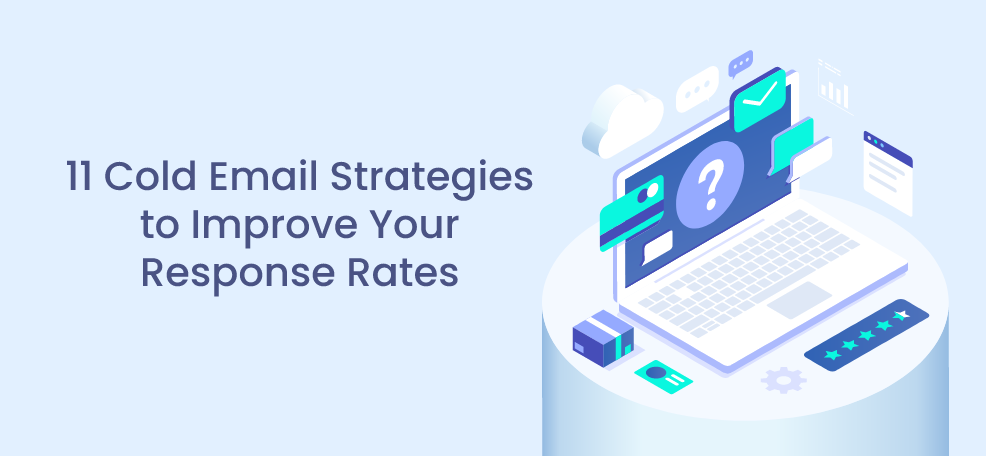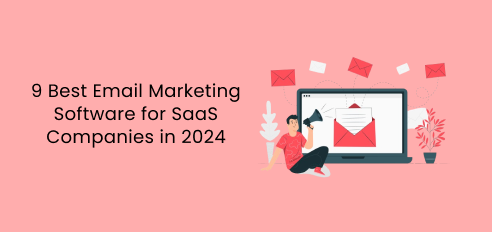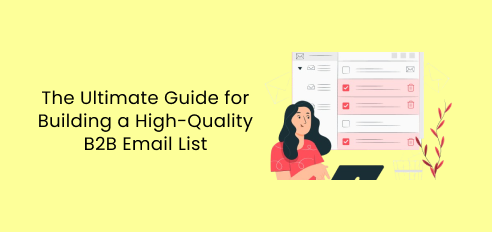Cold emails might seem like a crude sales tactic, but they can be very effective. And while sending out emails to people might not sound sophisticated, there often are more moving parts to a cold email campaign than you might imagine, and each element is an essential piece of the puzzle.
To optimize these pieces and campaigns overall, marketers have developed numerous research-based strategies to fine-tune every aspect and get the best results. Some of these strategies can be pretty complex, but others are more straightforward, and you can put them into action today.
We’ve compiled some of the best strategies that will most likely improve your response rates and make your cold email campaign a success.
1. Perfect Your Subject Line
Your subject line is arguably the most impactful component of your entire email marketing campaign. If your subject line is not correct, then your emails will be sent to the trash bin en masse, making the rest of your efforts in vain.

Use the subject line to engage the prospect and let them know there’s something of value for them inside the email. For example, let them know that your email will help them solve a problem. Also, make sure your subject line accurately represents the content of the email itself. It’s no use having people open the email only for them to close it right away.
If you can, personalize the subject line as much as possible. People tend to feel compelled to reply when something is addressed by name, so address the recipient by name in the subject line if you have that information. However, avoid trying to be too “chummy.” It can come across as contrived, making people less likely to open the email.
2. Work on the Aesthetics of Your Email
Make sure your email is aesthetically pleasing, and ensure that any images you use are of good quality. A wide range of software will help even amateurs create emails that look as though professional designers made them.
However, make sure to keep your design in line with the nature of the email. If the product is aimed at professionals, keep it professional and intelligent. If the product is something fun, the email itself should be entertaining.
Make sure the aesthetics of your text are also appealing. Break it up into easily digestible paragraphs of no more than four to six lines. A wall of unbroken text can be intimidating and challenging to read.
Use a font that is simple and easy to read, and select colors that provide high contrast between the text and the background – that way, your words don’t get lost among the other style elements. Also, double-check and triple-check your copy for typos and other errors. Finally, use a grammar checker to ensure proper grammar and spelling, and read through the copy to ensure it flows well.
3. Keep It Brief
People don’t want to open emails and have to do a lot of reading. Attention spans are short, and if something looks like it’s too much of a chore to read – people will close the email and move on.

Keep to the point and avoid any fluff. Read through the email, and if there are passages that aren’t necessary – remove them. A study by Boomerang showed that the ideal length of marketing emails is between 50 and 125 words.
Use your 125 words or less to address your prospect’s needs and explain the benefits of your product. Remember that you’re not necessarily trying to sell the product right there and then. Instead, you’re trying to build the prospect’s interest to encourage them to take the next course of action.
You can direct them to a knowledge base where they can find answers to common questions, and you can have a WordPress chat plugin waiting for them on your site to answer their questions more directly.
4. Research Your Targets
Get to understand your prospects better. If you are sending out many emails, then learn about your target audience as a group. If you are sending out just a few, learn what you can about your prospects as individuals.
For example, if you’re selling a whistleblowing system to small or medium-sized businesses, research their number of employees, annual profits, and any past damage to their reputation or lawsuits stemming from allegations of wrongdoing.
It’s essential to speak with your prospects in a way they can relate to. Find out what kind of language they use and which power words are likely to hit the target. Learn what their concerns are and what problems they have. Knowing what their problems are means you can explain how your product will make their lives easier.
5. Use a Conversational Tone
Make sure your email comes across as friendly but professional. Be conversational as if you were speaking with the recipient in person, but try to avoid acting as though you’re best friends because they’re likely to see right through it. Instead, focus on speaking to the person reading the email as though you’re a person and not a robot.
Also, keep your language accessible. Avoid using complex words that might be confusing, and be careful about saying anything that might alienate people. Make sure also that the email is entirely neutral politically and otherwise. If somebody feels you don’t share the same values, then there’s a good chance it could turn them off.
Also, avoid being too gimmicky. It’s great to be creative and catchy, but don’t do so at the expense of clarity. Make sure that your message is evident throughout. Use a cold email tool to find the right balance in tone and style of your outreach campaign, and add a personal touch to each message.
6. Share Relevant Statistics
If your product has helped companies increase their profits by a certain percentage, then say so in your email. Likewise, if your product has helped reduce injuries by a specific number – say so in your email. Statistics can be a powerful way to let people know how beneficial your effect is to them, and percentages can condense facts and figures into a single, easily digestible metric.

Avoid the temptation of exaggerating or outright lying about statistics. If people know you are dishonest, you will lose all trust right away – killing your chances of a sale. Where possible, add links to back up your statistics to let people know you are honest. Honesty will help you generate trust and build a relationship with your clients.
7. Leverage Social Proof
People tend to trust other consumers’ referrals – even if they don’t know them personally. Indeed, around 70% of people will trust a recommendation from a stranger. Using social proof in your emails will go a long way to establish trust.
Where possible, include the names of your customers along with their testimonials about your product. As before, be honest and don’t make up your referrals; otherwise, you’re likely to lose trust altogether.
Social proof can be compelling if it demonstrates how your product solves your customers’ problems. People find it easy to relate with other customers and will be able to visualize how your product can solve their problems. Once they can see that your product solves a problem for them, you’re a lot closer to the sale.
Remember to keep your social proof short and to the point. A single quote is often more than enough to have the desired effect.
8. Call to Action
Any email should have a call to action (CTA). Not only can CTAs be compelling and encourage people to act, but CTAs can also make it easier for people to know what they need to do to get to the next step. It can be easy otherwise for people to miss the link to the next step, potentially causing them to become frustrated and close the email without taking action.
Make sure your CTAs are clear to read and easy to find. In addition, they should contain clear instructions on what to do and what happens if somebody clicks on the link.
For example, “Click here to arrange a call” leaves no doubt about what will happen if the button is clicked. You can also try to add value to a CTA, such as “Click here to get your Shopify coupon codes today.”
Studies have shown that using a CTA can increase sales by 1,617%. No, those four digits aren’t a typo – CTAs are that powerful, so make sure you use one.
9. Use A/B Testing
Creating the perfect email is not an exact science, and if you did manage to make the ideal email, it would probably not be perfect for long. A/B testing will let you constantly test your emails to see which ones perform best.
You can experiment by changing text, images, or both to see which combination is the most effective. Even changing the color of your CTA button can make a difference, so experiment with everything to find what works.

A/B testing will also help you to keep up with changes in the markets and consumer behavior. It helps you to adapt and allows you to maintain an edge over the competition.
10. Ask for Feedback from Your Team
When your email is complete, ask the rest of your team for feedback. Feedback allows you to tap into different perspectives and experiences. Other people will likely pick up on things that don’t sound quite right, or if something is missing, or if there’s too much. Ask for feedback on the overall design, individual images, the copy, CTAs, and every other email component.
It’s also a good idea to read the email out loud. Reading out loud can help highlight parts that don’t seem sincere or that maybe don’t make sense. It also allows you to write in a conversational tone that’s still professional.
11. Send Follow-Up Emails
Reply rates for follow-up emails are typically higher than reply rates for the first email, so you are potentially losing out on a lot of business if you don’t send at least one follow-up email. Incorporate follow-up emails into your strategy; if you’re using cold email automation software, make sure there’s a process in place that will send follow-up emails if needed.
Bear in mind that different follow-up emails should be used for different situations. For example, if somebody has opened an email from you but not taken action, they should be approached differently than if they have clicked through and viewed pages on your website. Again, marketing software will give you this information.
Getting It Right Is Worth the Effort
Cold email campaigns can be very effective if done right, but it takes effort to get the right results. It’s essential to focus on the subject line because it will significantly impact whether the email is even opened. Make sure the email is aesthetically pleasing and that it says the right thing in the right way. Use analytics to measure performance and tweak the emails, and make sure to follow up.
Cold emails can attract new customers and drive revenue, so it’s well worth your time and effort to get it right.









